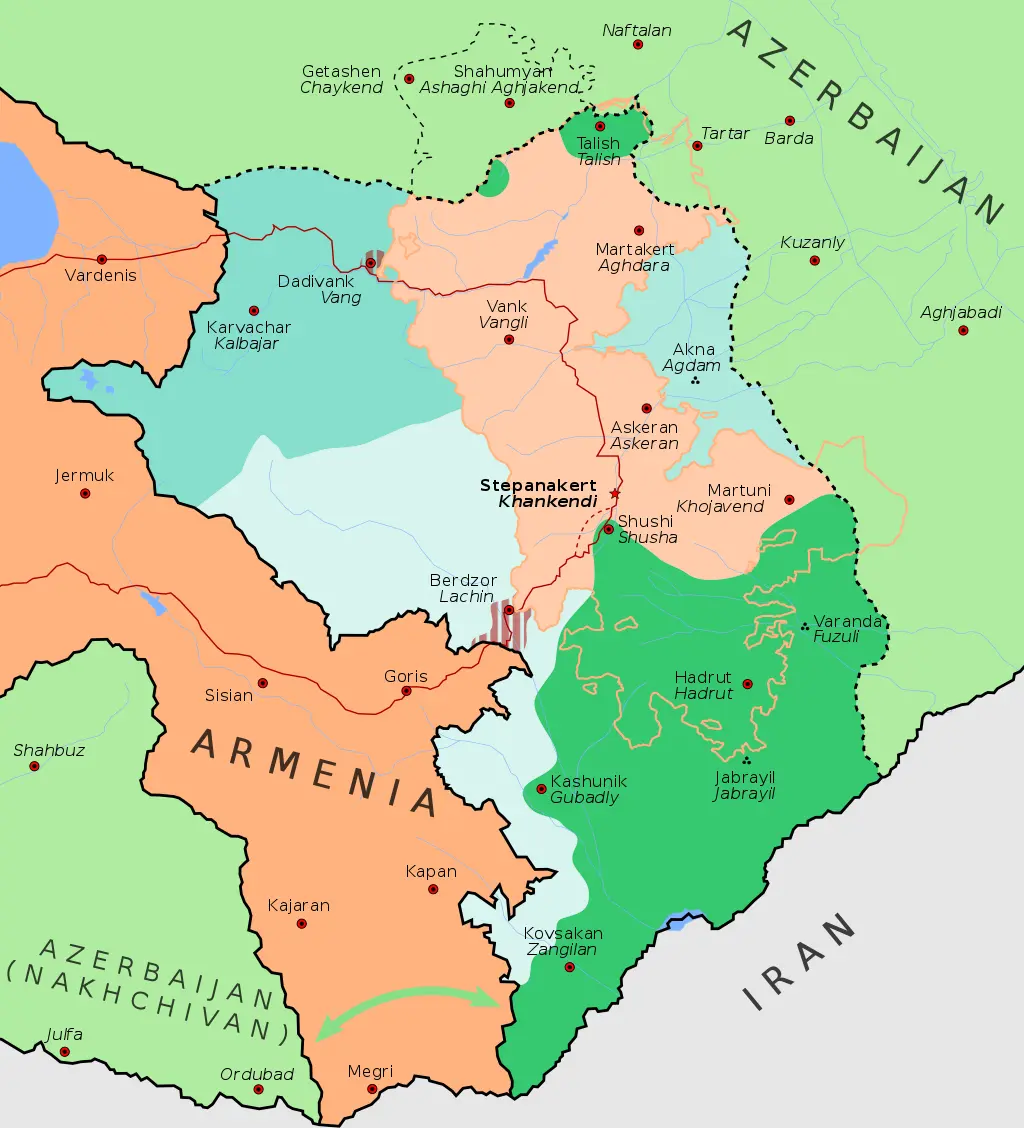Syunik (Zangezur in Azeri), a thinly populated, strategically important tiny southernmost province of Armenia separating Azerbaijan from its western exclave of Naxcivan (or Nakhchivan), and sharing a 40 KM southern border with Iran, is emerging as a geo-political hotspot. A transport corridor through Zangezur (promoted by Azerbaijan & supported by Turkiye; opposed by Armenia & Iran) would give Azerbaijan unimpeded access to its western exclave and through it to/from Turkiye.
The 2020 ceasefire to end Nagorno-Karabakh War mandated that Armenia facilitate the opening of transport connections between Naxcivan & Azerbaijan.
Fears that Baku may have designs on Syunik after Azerbaijan’s lightening military offensive in September this year that led to Karabakh leadership’s surrender & exodus of 100,000 ethnic Armenians are growing. Uncertainty and gradual exodus of population may render Syunik vulnerable.
Pan-Turkic Agenda
Discussions about reopening Soviet-era rail link connecting Azerbaijan got bogged down over the concept of “Zangezur Corridor” proposed by Azeri President Ilham Aliyev, at an Organisation of Turkic States meeting, which he said would “unite the whole Turkic world.” Aliyev played on a long-held Turkish desire for a direct link between it and Azerbaijan that would eliminate Iran’s physical access to Armenia, while opening a land route from Turkey, through Azerbaijan, to northern Iran which has a majority Azeri population and central Asia. Posters soon appeared in Iranian city of Tabriz, home to sizeable Azeri population, proclaiming that “Zangezur is Azerbaijani” and promoting the creation of a Baku-Tabriz-Ankara Axis. This rang alarm bells in Iran.
Aliyev has also issued thinly veiled threats to seize the land for the corridor if Armenia did not comply. He promoted a discourse that identified parts of Armenia – in particular Syunik – as Western Azerbaijan, from which ethnic Azerbaijanis had been unjustly forced out and to which they should return.
Red Line for Iran
Iran’s 40-mile border with Armenia is important in its strategic national security perception. Iran which largely had a hands-off approach to the Armenia-Azerbaijan conflicts opposes Zangezur Corridor. Iran made it clear that any Azerbaijani invasion or redrawing of borders that removes Armenia as its neighbour represents a red line. In Aug 2022, Iran opened a consulate in Syunik. Iran’s military conducted a large-scale military exercise on Azerbaijan border.
Iran views Zangezur Corridor as a “springboard for NATO in the region.” Turkey is a key NATO member. Iran favours 3+3 formula for resolving disputes – Armenia, Azerbaijan and Georgia on one hand and Turkiye, Iran and Russia on the other.
Enter EU: In Jan 2023, EU launched Resilient Syunik (Euro 116 million development assistance) – the real aim may be to bolster the security of Syunik which became vulnerable following Azerbaijan’s victory in the 2020 Karabakh war. The EU has stationed border monitors in Syunik. The EU is also funding a North-South road in Armenia, which may be of interest to Russia as well as Iran. Many of Russia’s east-west trade links have been severed by Ukraine War, Moscow is seeking new north-south routes, with Iran and Persian Gulf ports for global trade.
Russia too has expanded its presence – diplomatic and military in Syunik. Russia’s intentions are less clear, it may fear being outmanoeuvred in the Caucasus.
Israel-Hamas War adds a new dimension, given Israel’s support during war with Armenia and their mutual desire to contain Iran regionally. Zangezur Corridor Crisis provides a useful issue that could be used divert Iranian resources away from a potential conflict with Israel – either directly or by proxies – by having Azerbaijan position itself to seize control of the Syunik / Zangezur region by force.
The region has two major conflicts ongoing on either side in Ukraine and Gaza; the last thing it needs is another flare-up involving regional powers.
Disclaimer: The article has reference to open sources. The Map has been taken from Wikipedia – it is illustrative.


